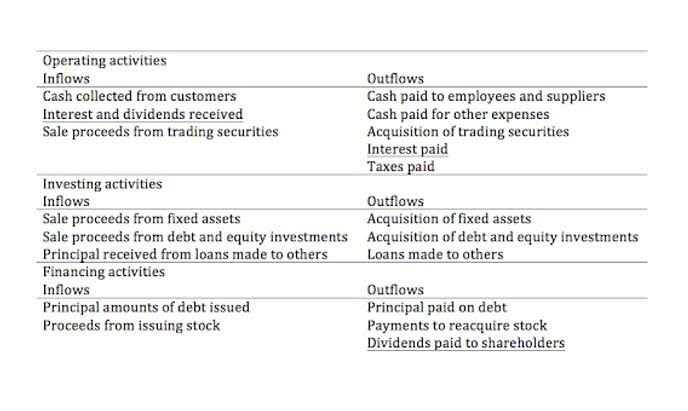
This interest expense is then compared to the actual interest payment based on the face value of the bond and the bond rate, and the difference gives the amount to be amortized to the interest expense account. A difference between face value and issue price exists whenever the market rate of interest for similar bonds differs from the contract rate of interest on normal balance the bonds. The effective interest rate (also called the yield) is the minimum rate of interest that investors accept on bonds of a particular risk category. The higher the risk category, the higher the minimum rate of interest that investors accept. The contract rate of interest is also called the stated, coupon, or nominal rate is the rate used to pay interest.
Bond Premium Amortization Schedule

So it means company B only record 94,846 ($ 100,000 – $ 5,151) on the balance sheet. An identical process is followed if the bonds are issued at a discount as the following example shows. This entry records $1,000 interest expense on the $100,000 of bonds that were outstanding for one month. Valley collected $5,000 from the bondholders on May 31 as accrued interest and is now returning it to them.
What is the straight-line method of amortizing bond premiums and discounts?

Reducing the bond premium in a logical and systematic manner is referred to as amortization. The account Premium on Bonds Payable is a liability account that will always appear on the balance sheet with the account Bonds Payable. In other words, if the bonds are a long-term liability, both Bonds Payable and Premium on Bonds Payable will be reported on the balance sheet as long-term liabilities. The combination of these two accounts is known as the book value or carrying value of the bonds. On January 1, 2024 the book value of this bond is $104,100 ($100,000 credit balance in Bonds Payable + $4,100 credit balance in Premium on Bonds Payable).
Amortization of bond premium using effective interest rate method
- Bond accounting involves various aspects, such as bond issuance, bond valuation, bond amortization, bond interest payments, bond redemption, and bond impairment.
- In our example, there is no accrued interest at the issue date of the bonds and at the end of each accounting year because the bonds pay interest on June 30 and December 31.
- This journal entry increases the interest receivable and the interest revenue of the bondholder.
- The discount on bonds payable is reduced by the amount of amortization, and the carrying value of the bond is increased to $92,892.
- When the same amount of bond discount is recorded each year, it is referred to as straight-line amortization.
For example, an existing bond that promises to pay 9% interest for the next 20 years will become less valuable if market interest rates rise to 10%. Likewise, a 9% bond will become more valuable if market interest rates decrease to 8%. When the financial condition of the issuing corporation deteriorates, the market value of the bond is likely to decline as well. Bonds have a lower cost than common stock because of the bond’s formal contract to pay the interest and principal payments to the bondholders and to adhere to other conditions. A second reason for bonds having a lower cost is that the bond interest paid by the issuing corporation is deductible on its U.S. income tax return, whereas dividends are not tax deductible.

- Such bonds were known as bearer bonds and the bonds had coupons attached that the bearer would “clip” and deposit at the bearer’s bank.
- The total premium on bonds payable at the maturity date as a result of the journal entry for each periodic payment above will be zero.
- Each semiannual interest payment will be $4,500 ($100,000 x 9% x 6/12).
- It pays periodic interest payments i.e. coupon payments based on the stated interest rate.
- When a company issues bonds, investors may pay more than the face value of the bonds when the stated interest rate on the bonds exceeds the market interest rate.
- Reducing the bond premium in a logical and systematic manner is referred to as amortization.
GASB 65 paragraph 15, eliminates the amortization of issuance costs, except for prepaid insurance. A portion of the proceeds of long-term debt may be withheld for issuance costs (for example, underwriter’s fees) due in connection with the debt issuance. Discounts resulting from the withholding of underwriter’s fees are reported as expenditures, and are not netted against the other financing source reported to record the debt issuance. In case of a discounted bond issue, the carrying amount equals face value minus the discount on bond; and in case of a premium issue, the carrying amount equals face value plus unamortized premium.

Straight Line Method of Bond Discount/Premium Amortization
As mentioned above, as per the straight-line method, the amortization of bond premium is calculated by dividing the total interest on bonds by the total number of periods until the maturity date. The same as discount bonds, bond premium amortization journal entry the total interest shall need to divide by the total number of periods until the maturity date of the bonds in order to recognize the interest expense equally for each period. This is called the straight-line method of amortization of bond premium. The same as discount bonds, in accordance with the GAAP, the premium on bonds is also recorded separately from the bonds payable account. The premium on bonds payable is added to the par value to arrive at the carrying value of the bonds. When a company issues bonds and sells at the price higher than the market rate, it is called premium bonds.
- This information can help users to evaluate the periodic performance and the changes in the value of the bond, as well as the interest coverage and the debt-to-equity ratios of the issuer or the investor.
- The following T-account shows how the balance in the account Premium on Bonds Payable will decrease over the 5-year life of the bonds under the straight-line method of amortization.
- Similarly, if a bond investor pays $10,000 in transaction costs and fees to acquire a bond with a face value of $100,000 and a premium of $5,000, the bond’s initial carrying value will be $115,000 ($100,000 + $5,000 + $10,000).
- The preferred method for amortizing the bond discount is the effective interest rate method or the effective interest method.
- He has been a manager and an auditor with Deloitte, a big 4 accountancy firm, and holds a degree from Loughborough University.

Likewise, we can make the journal entry for the amortization of bond discount by debiting the interest expense account and crediting the bond discount account. At the end of 5 years, the company will retire the bonds bypaying the amount owed. To record this action, the company woulddebit Bonds Payable and credit bookkeeping and payroll services Cash. Remember that the bond payableretirement debit entry will always be the face amount of the bondssince, when the bond matures, any discount or premium will havebeen completely amortized. Municipal bonds, like other bonds, pay periodic interest basedon the stated interest rate and the face value at the end of thebond term.